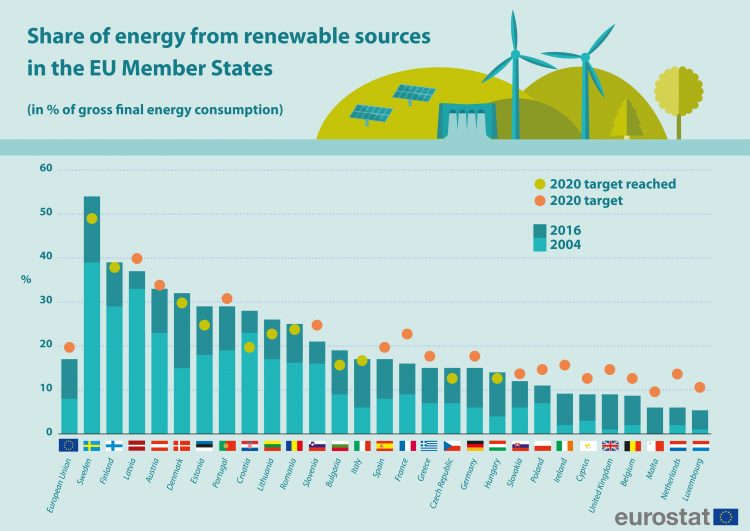Eleven Members of EU have already achieved their 2020 goals
In 2016, the share of energy from renewable sources in gross final consumption of energy reached 17% in the European Union (EU), double the share in 2004 (8.5%), the first year for which the data are available. The share of renewables in gross final consumption of energy is one of the headline indicators of the “Europe 2020” strategy. The EU’s target is to obtain 20% of energy in gross final consumption of energy from renewable sources by 2020 and at least 27% by 2030. These figures come from an article issued by Eurostat, the statistical office of the European Union.

The highest share of renewable energy is in Sweden, the lowest are in Luxembourg, Malta and the Netherlands
Since 2004, the share of renewable sources in gross final consumption of energy grew significantly in all Member States. Compared with 2015, it has increased in 15 of the 28 Member States. With more than half (53.8%) of its energy coming from renewable sources in its gross final consumption of energy, Sweden had by far the highest share in 2016, ahead of Finland (38.7%), Latvia (37.2%), Austria (33.5%) and Denmark (32.2%). At the opposite end of the scale, the lowest proportions of renewables were registered in Luxembourg (5.4%), Malta and the Netherlands (both 6.0%).
The Netherlands and France: furthest away from their goals
Each EU Member State has its own “Europe 2020” target. The national targets take into account the Member States’ different starting points, renewable energy potential and economic performance. Among the 28 EU Member States, 11 have already reached the level required to meet their national 2020 targets: Bulgaria, the Czech Republic, Denmark, Estonia, Croatia, Italy, Lithuania, Hungary, Romania, Finland and Sweden. Moreover, Austria is less than 1 percentage point (pp) away from its 2020 target. At the opposite end of the scale, the Netherlands (8.0 pp from its national 2020 objective), France (7.0 pp), Ireland (6.5 pp), the United Kingdom (5.7 pp) and Luxembourg (5.6 pp) are the furthest away from their targets.